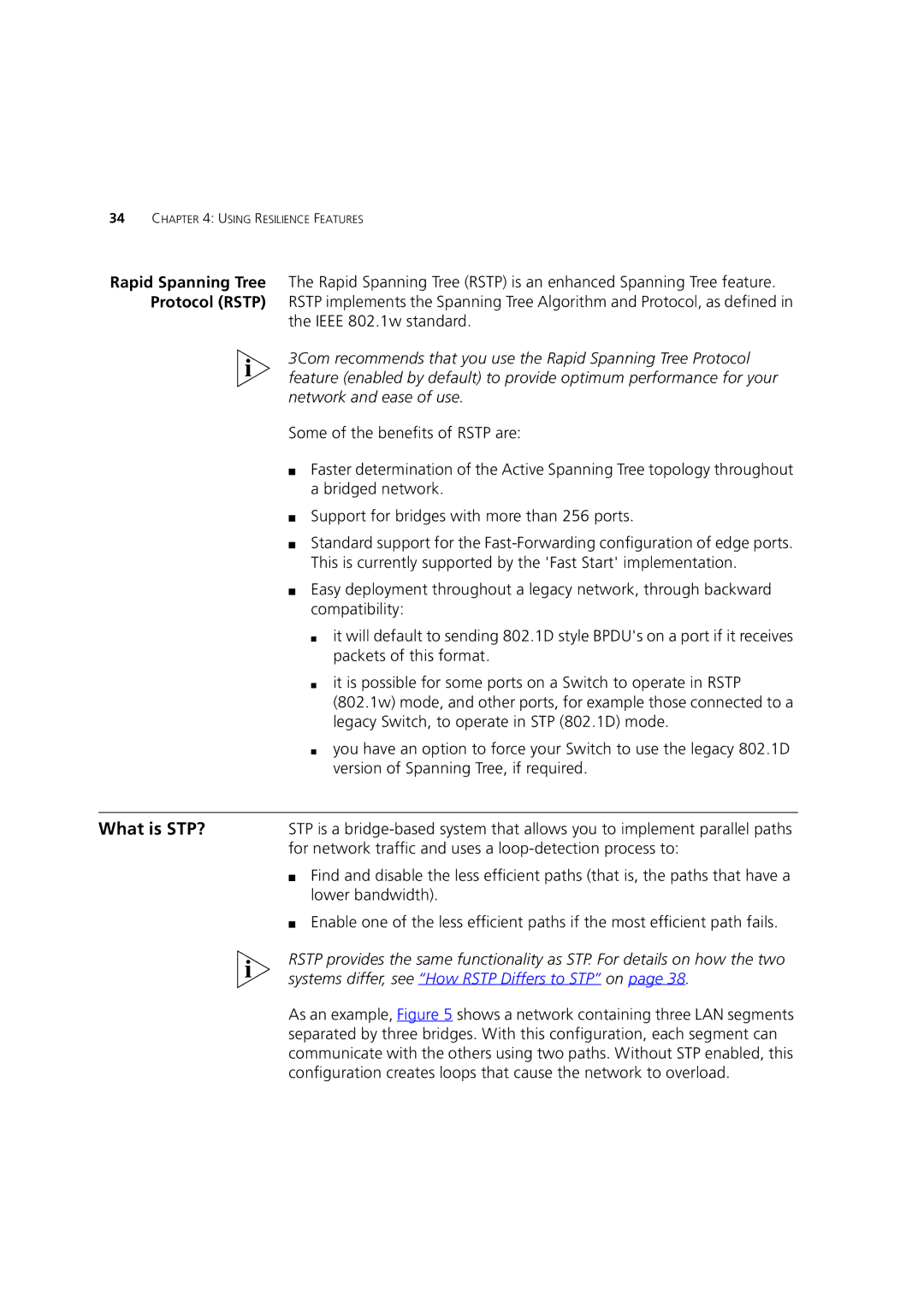
34CHAPTER 4: USING RESILIENCE FEATURES
Rapid Spanning Tree The Rapid Spanning Tree (RSTP) is an enhanced Spanning Tree feature. Protocol (RSTP) RSTP implements the Spanning Tree Algorithm and Protocol, as defined in
the IEEE 802.1w standard.
3Com recommends that you use the Rapid Spanning Tree Protocol feature (enabled by default) to provide optimum performance for your network and ease of use.
Some of the benefits of RSTP are:
■Faster determination of the Active Spanning Tree topology throughout a bridged network.
■Support for bridges with more than 256 ports.
■Standard support for the
■Easy deployment throughout a legacy network, through backward compatibility:
■it will default to sending 802.1D style BPDU's on a port if it receives packets of this format.
■it is possible for some ports on a Switch to operate in RSTP (802.1w) mode, and other ports, for example those connected to a legacy Switch, to operate in STP (802.1D) mode.
■you have an option to force your Switch to use the legacy 802.1D version of Spanning Tree, if required.
What is STP? STP is a
■Find and disable the less efficient paths (that is, the paths that have a lower bandwidth).
■Enable one of the less efficient paths if the most efficient path fails.
RSTP provides the same functionality as STP. For details on how the two systems differ, see “How RSTP Differs to STP” on page 38.
As an example, Figure 5 shows a network containing three LAN segments separated by three bridges. With this configuration, each segment can communicate with the others using two paths. Without STP enabled, this configuration creates loops that cause the network to overload.
